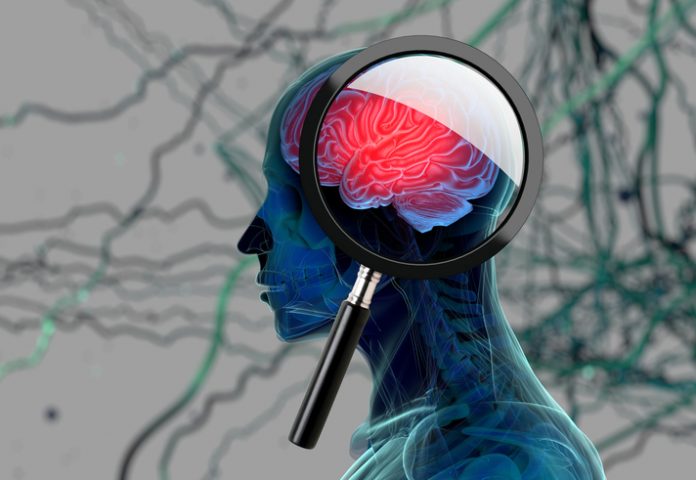
Research by scientists in the U.K. suggests that many cases of common neurodegenerative diseases that develop later in life, such as Alzheimer’s disease (AD) and Parkinson’s disease (PD), may be caused by spontaneous gene mutations that occur during embryonic development. Based on research that harnessed a combination of ultra-high deep sequencing and mathematical modeling techniques, a team of scientists in the U.K. reported evidence that somatic (i.e., spontaneous, rather than inherited) mutations that occur in clusters of brain cells in the embryo could be responsible for the production of misfolded proteins that spread through the brain and ultimately lead to neurodegenerative disease.
“These spelling errors arise in our DNA as cells divide, and could explain why so many people develop diseases such as dementia when the individual has no family history,” says research lead Patrick Chinnery, FRCP, FMedSci, professor, at the Medical Research Council (MRC) Mitochondrial Biology Unit and the department of clinical neurosciences at the University of Cambridge. “These mutations likely form when our brain develops before birth—in other words, they are there waiting to cause problems when we are older.”
Dr. Chinnery’s team and colleagues at Imperial College London, and Newcastle University, reported their finding in Nature Communications, in a paper titled, “High prevalence of focal and multi-focal somatic genetic variants in the human brain.”
Common neurodegenerative diseases such as AD and PD are characterized by the aggregation of toxic proteins and the loss of brain cells in defined brain regions, the authors write. In about 5% of cases there is a family history of the disorder, and inherited mutations in one of about 50 genes is thought to either contribute to or cause disease. However, for the majority of neurodegenerative disease cases the cause isn’t known.
“As the global population ages, we're seeing increasing numbers of people affected by diseases such as Alzheimer's, yet we still don't understand enough about the majority of these cases,” says Dr. Chinnery. “Why do some people get these diseases while others don't? We know genetics plays a part, but why do people with no family history develop the disease?”
For most genes implicated in neurodegenerative disorders a single mutated copy is required to cause disease, the authors continue. They hypothesized that spontaneous—or somatic—mutations arising in the same genes in some cell lineages could then contribute to the pathogenesis of non-familial cases. “Although we have no direct evidence, islands of cells containing these mutations could synthesize misfolded proteins with the potential to spread throughout the brain during human life,” they comment.
To investigate this hypothesis the team used ultra-high depth sequencing technology to analyse genes in 173 tissue samples from 54 individual brains, including 14 from healthy individuals, 20 with AD, and another 20 with Lewy body dementia, a type of dementia that is estimated to affect more than 100,000 people in the U.K. Using the technique they sequenced 102 genes—including all of the 56 genes that are known to cause or increase the risk of common neurodegenerative disease—in the brain cells more than 5,000 times. The results identified somatic mutations in 27 of 54 brains, including both healthy brains and those with either AD or Lewy body dementia. Nine of the brains carried more than one mutation across all the samples sequenced.
When the team then combined their sequencing data with a mathematical model of neurodevelopment, the results indicated that mutations can arise during embryonic development, and that islands of brain cells harboring the mutations are common in the population. “… based on observations from 173 human brain tissue samples, and ~611,000 cells, our findings indicate that the human brain is highly likely to contain many zones of cells harboring somatic mutations, including mutations affecting neurodegenerative disease genes,” the authors conclude … “These regions may have the potential to generate mutant proteins that form novel fibrillar structures, which could spread and cause different neurodegenerative diseases, or modify the clinical phenotype, depending on the original mutated gene.” They suggest that their model could serve as the foundation for more in-depth exploration of the prevalence of the mutated foci, “suggesting that such foci are possessed by almost all individuals.” The researchers note that “although pathogenic mutations occurring within the first ~1000 cells during brain development are rare, these are likely to cause a disease phenotype because they will affect a large proportion of brain neurons.”
The findings could also help to explain why no two cases of Alzheimer’s or Parkinson’s are the same, Dr. Chinnery adds. “Errors in the DNA in different patterns of brain cells may manifest as subtly different symptoms.” Further research will be needed to verify the findings and confirm whether the mutations are more common in patients with dementia, he suggests. “The question is: how relevant are these treatments going to be for the 'common-or-garden' variety without a family history? Our data suggests the same genetic mechanisms could be responsible in non-inherited forms of these diseases, so these patients may benefit from the treatments being developed for the rare genetic forms.”













